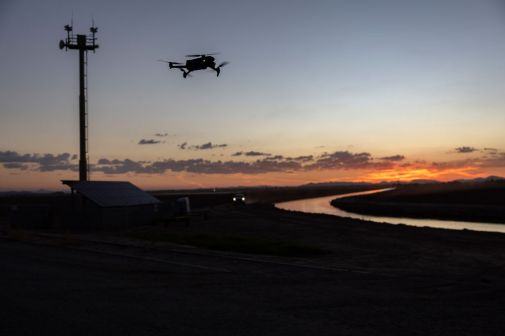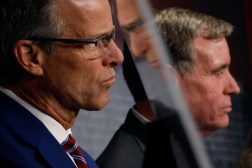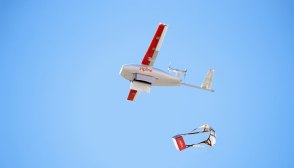
The next time you’re taking family photos at the Grand Canyon, you won’t have to worry about an unmanned aircraft photo-bombing you – at least not for now.
In a policy memorandum released today, Jonathan Jarvis, the director of the National Park Service, directed park superintendents to “prohibit launching, landing or operating unmanned aircraft, commonly referred to as drones, on lands and waters administered by the National Park Service.”
“We embrace many activities in national parks because they enhance visitor experiences with the iconic natural, historic and cultural landscapes in our care,” Jarvis said in the release. “However, we have serious concerns about the negative impact that flying unmanned aircraft is having in parks, so we are prohibiting their use until we can determine the most appropriate policy that will protect park resources and provide all visitors with a rich experience.”
The ban is temporary, though, according to the NPS. Next, Jarvis will propose NPS-wide regulations for unmanned aircraft systems. The process, Jarvis said, is not a quick one, and the amount of time it will take NPS to develop those rules will depend on the complexity of the issues involved. The public will also have an opportunity to comment on the proposed regulations.
In the NPS’s Code of Federal Regulations, operating or using unapproved aircraft on land or water is prohibited. The code also prohibits the use of hovercrafts in NPS-controlled areas.
Jarvis called on park superintendents to use their authority, established in the Code of Federal Regulations, to institute this prohibition of unmanned aerial systems. The director also called on superintendents to include the ban in each park’s individual regulations.
According to the release, at the issuance of the memo, any permits that had previously been issued regarding UAS are suspended. Those permits can be reviewed and approved by the NPS’ associate director for visitor and resource protection. The associate director will also be charged with the responsibility of authorizing the use of any previously-unapproved UAS.
The new prohibition will not affect the authorized use of model aircraft for hobbyist or recreational use, according to the release.
The memorandum also leaves open the option for the NPS to use UAS for their own purposes – such as search and rescue, fire operations and scientific studies; however, these uses must go through the same approval process with the associate director for visitor and resource protection.
“We strongly encourage all UAS users to operate the technology responsibly and to follow all applicable laws,” Melanie Hinton, senior communications manager at Association for Unmanned Vehicle Systems International, or AUVSI, said in an email statement. “UAS could have a variety of beneficial uses from assisting search and rescue missions, monitoring wildfires and surveying wildlife. The FAA is currently working on regulations for the operation of UAS, and, until they are complete, individuals and organizations should follow the National Park Service’s rules and other applicable laws in order to ensure the safety of the airspace and help to protect our national parks.”
The NPS is not the first agency to take a stance on UAS. The Federal Aviation Administration this month authorized BP to fly drones over pipelines in Alaska and is currently considering a request by the Motion Picture Association of America to use drones for filming.
The memorandum comes after drones have made appearances in several prominent national parks. According to NPS, in April an unmanned aircraft crashed in the Grand Canyon disrupting what the NPS called a “quiet sunset.” Drones have also reportedly disturbed wildlife in Zion National Park in Utah.






